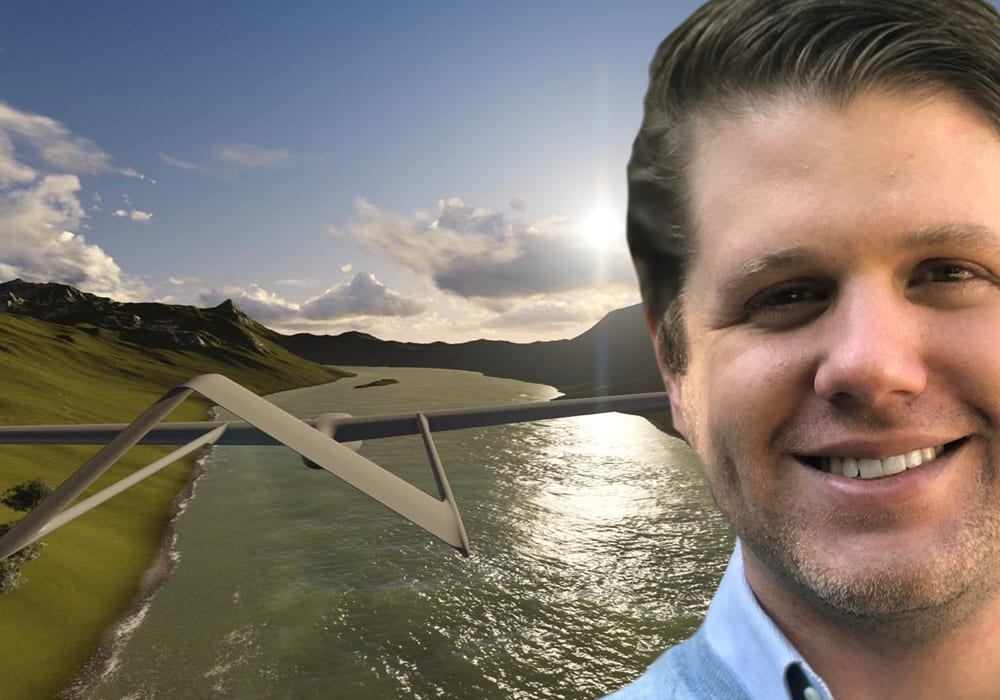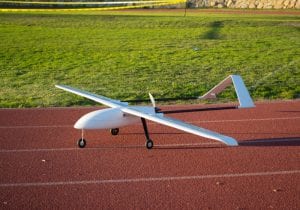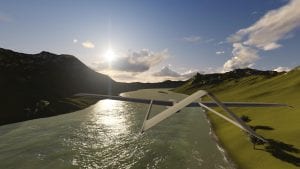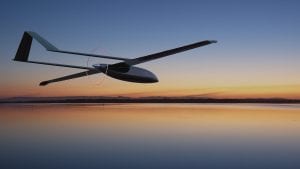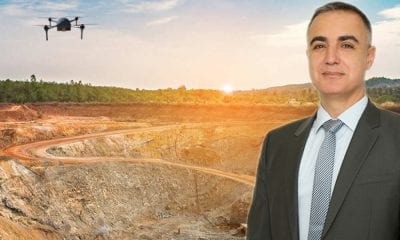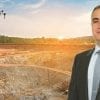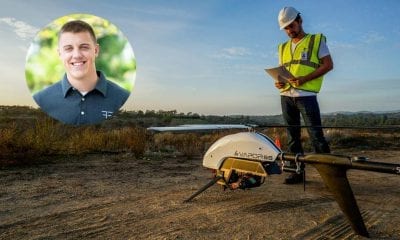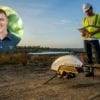Back to Base (B2B)
Aloft with Applied Aeronautics’ Albatross Drone, Interview with Ryan Johnston, Founder
Applied Aeronautics is an Austin, Texas-based UAV manufacturer, specializing in affordable, long-range composite solutions. We spoke with CEO and Founder at Applied Aeronautics, Ryan Johnston, about the Applied Aeronautics’ flagship product, ‘The Albatross‘, an electric, fixed wing UAV.
Can you tell us a little about the background of Applied Aeronautics?
Applied Aeronautics designs and manufactures affordable, long-range drones for commercial, emergency response and government customers around the world. Before launching the company in 2014, I enjoyed a successful career in the natural resources sector. At that time, I developed an interested in using drones for asset management and exploration, but after researching the topic was disappointed to see that the commercial systems that met my mission requirements carried inordinately and unexplainable high price tags. Rather than accept the status quo, I founded Applied Aeronautics to fill what I saw as a significant gap in the UAV market. When we launched sales in 2015, our Albatross UAV platform was roughly 1/10 the price of similar systems while boasting similarly robust capabilities.
Your flagship UAV is the Albatross, which is a fixed wing drone. What advantages does it have over quadcopters, and what was the thinking behind its design and development?
The advantages of fixed-wing drones over quadcopters are many and varied. For starters, fixed-wing platforms are more operationally efficient than quadcopters. This translates into longer flight times, extended range and consequently more ground covered per mission. Where the average quadcopter can get around 15-25 minutes of flight time, our fixed wing system gets anywhere from 2-5 hrs, making it better suited to missions with extensive data collection needs as well as long-range ISR, search and rescue support and emergency management.
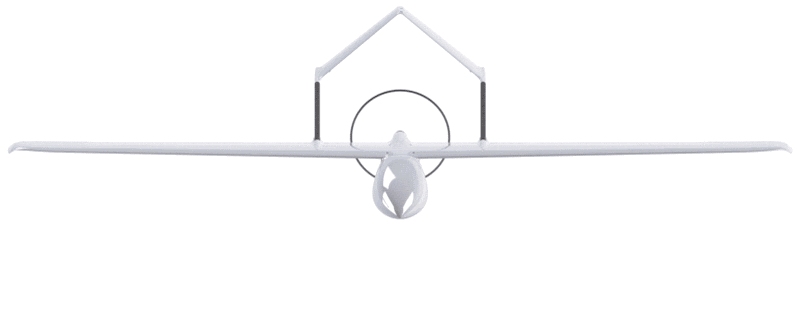
Albatross – Professional UAV. Image Credit: Applied Aeronautics
Fixed wing systems also offer better aerodynamic performance and are only marginally influenced by environmental conditions so they can accomplish missions in high winds making them well suited for use in a range of environments.
All this is to say that we believe fixed wing is simply the best configuration for most commercial applications. Regarding our design, we wanted to push the already impressive qualities of a fixed wing platform a step further by prioritizing efficiency over aesthetics. We designed every element of the air-frame with this philosophy in mind. From the wings forward swept platform to the trapezoidal fuselage, all components were designed to reduce drag and increase flight times.
How is Albatross helpful in precision farming?
It’s no secret that UAV technology is an important asset to the modern farmer, but it’s our view that nothing is advantageous if it’s not attainable, so we take care to ensure our platform remains affordable for farms of all sizes.
That aside, precision agriculture is all about early detection and the effective use of finite resources whether that be water and fertilizers or people and time. The Albatross is an integral part of that equation, giving the farmer access to critical data to make more informed decisions while preserving resources for other equally important jobs. For instance, the farmer can deploy the Albatross in the morning by just hitting a button, and using a multispectral or thermal sensor, by afternoon have a highly specific picture of their soil quality and water levels as well as any insect or pest related issues. With this data, the farmer can better optimize watering, pesticide usage, and fertilizers.
Concerning early detection, by using hyperspectral imaging, the Albatross can detect issues before visible changes become noticeable to the human eye. This allows for early mitigation of any health-related problems which can lead to higher yields and subsequently more revenue for the farm.
- Applied Aeronautics Albatross
- Applied Aeronautics Albatross
- Applied Aeronautics Albatross
- Applied Aeronautics Albatross
- Applied Aeronautics Albatross
- Applied Aeronautics Albatross
Image Credit: Applied Aeronautics
Can Albatross be considered for use in disaster management? How would it be used and to what advantage?
We always intended for the Albatross to be used for a range of applications and disaster management is undoubtedly one of those. We view our system as a critical link in the emergency response chain. Prevention is of course always the goal, so we’ve concentrated efforts in recent months on encouraging groups at every level to use the Albatross to detect and eliminate threats early by conducting regular aerial surveys.
During and after a disaster, time and safety are of the essence. Along these lines, the Albatross offers significant advantages over traditional manned aircraft. For instance, where manned crafts require extensive logistical planning and preparation, the Albatross can be easily and rapidly deployed. More importantly, the Albatross reduces risk to human life by eliminating the need for pilots in the aerial response process.
The Albatross is also more ideal in these scenarios than quadcopters given that the increased flight times allow for more ground to be covered in a single flight, eliminating the need to swap out batteries and redeploy. It also boasts a modular design and large payload bay that can hold multiple cameras and sensors so response crews can capture a range of data in a single flight.
What benefits does the Albatross bring to security and surveillance?
Much like with emergency response, the Albatross offers significant advantages for security and surveillance in that it can be quickly deployed, is much more cost-effective than manned aircraft, offers extended flight times, performs well in inclement weather and allows for payloads to be swapped out to meet various needs. The aerial perspective provided by the Albatross UAV can give security teams and military personnel access to otherwise unattainable information to better spot threats, complete investigations and plan an appropriate response. Our platform can be used for anything from anti-terror operations to border and coastal surveillance.
What are its take-off and landing requirements?
The Albatross can take-off and land on a number of surfaces including unpaved roads and grassy fields and needs about 50 feet for both take-off and landing. We’re also in the final stages of testing our new catapult system which will eliminate the need for a runway altogether.
Is the Albatross autonomous or manually controlled? What is its maximum range?
In developing the Albatross, we wanted to make sure it was intuitive and easy to use. We measure that by looking at the number of steps between opening your flight case and accessing useable data. A critical piece of that puzzle was nailing fully autonomous flight, including take-off and landing assisted by an on-board laser altimeter. That said, manual override and control is possible and an essential element of our safety checks and balances.
Regarding range, given how versatile the platform is, maximum range is highly contingent on how you’re flying and what you’re carrying. That being said, in its most efficient setup, we’ve seen the Albatross get anywhere from 4-5 hrs of flight time using our custom Lithium Ion batteries.
Your website calls the Albatross the “first affordable, professional UAV” – how has the technology behind the body’s assembly achieved this?
While a significant objective of ours was to develop an affordable platform, it was equally important that it be robust enough for commercial applications. To achieve this, we did everything from reinforcing the frame with carbon fiber, to meticulously test a range of avionics before selecting the ideal set up. Once we’d tackled capabilities, the challenge became offering this at a low-cost.
To do so, we employ the philosophy of giving customers what they need and not what they don’t. For instance, while carbon fiber offers increased strength over fiberglass, it’s also significantly more expensive. To reduce costs, we add carbon fiber to areas that require increased strength and eliminate it from areas that don’t. This is just a small example but demonstrates an ideological perspective that we’ve translated into every aspect of our production and materials selection.
What sort of components are able to be added to the payload bay? Is it able to accommodate different kind of cameras, gimbal or other custom components?
The short answer is almost anything, with you only limitations being weight and physical dimensions. The Albatross can accommodate most commercially available sensors and cameras, and the sizeable payload bay allows for multiple to be carried simultaneously, as well as different variations to be used on any given day. We’ve worked with customers to integrate everything from high-end LIDARs to EO/IR, thermal, and NDVI cameras. We also offer a handful of proprietary systems like Applied HD, our encrypted, low latency, high-definition video link.
What type of batteries are available, and does the location of batteries affects the payload position or shape and size?
We created custom lithium-ion batteries to work in tandem with the Albatross. They were designed in a trapezoidal shape to contour to the inside of the fuselage and slot under the center wing which keeps them out of the payload bay.
What special features does the Albatross have that give it a competitive advantage?
For starters, the Albatross is a wildly efficient UAV. Boasting an almost 30:1 glide ratio it achieves flight times of up to 5 hrs on electric power. This kind of duration allows the end-user to collect an incredible amount of data in a single flight without ever needing to land and recharge the batteries.
The electric element of our platform is significant because it eliminates the need for fuel which is challenging to find remote locations as well as being both loud and messy.
The Albatross is also a highly customizable platform that was designed to adapt to our customers evolving needs. On a day-to-day basis, the customer benefits from the freedom to swap cameras and sensors as necessary, as well as make changes to the avionics when required. Long term, the system was designed to evolve as technology advances.
The Albatross is also a composite based plane. This is significant because where foam platforms are similarly affordable, they offer limited payload capacities making it challenging to carry commercial cameras and sensors. The Albatross, on the other hand, has an available payload capacity of up to 4.4KG.
On top of all of this, the Albatross is a fraction the cost of competing systems. So where someone might not have been able to purchase a UAV before, they now have that option available to them. Similarly, we’ve seen customers who may have only been able to buy one unit of a competing product come to us and buy 10 and 20 to build out their fleets and launch viable drone programs.
Where are you at production stage?
From a production standpoint, we’ve been selling the Albatross for the last 2.5 years and have delivered them to customers in over 40 countries. At the moment, we’re actively expanding to new markets like emergency response and public safety as well as working on new products to augment our existing systems.
Where do you see Albatross flying in next 20 years?
Everywhere! We strive to make the Albatross UAV the commercial standard.
What do you see for the future of the UAV industry in general?
We know that the commercial sector is the fastest growing segment of the UAV market, but we also know that there are significant regulatory barriers to entry in most countries. As such, technology is dramatically outpacing regulation. Looking ahead, I see expanded commercial possibilities as manufactures and government agencies work together to develop standardized processes and infrastructure to promote and facilitate safe and responsible use. My hope is that drones will one day be deployed anywhere that data was previously challenging or impossible to collect, unlocking increased knowledge and potential.
About Ryan Johnston – CEO and Founder at Applied Aeronautics
 Ryan Johnston’s professional career is as distinguished as it is diverse. He has worked in both the finance and natural resource sectors with a focus on Oil and Gas as well as Iron Ore Mining. During his time on site, Ryan completed extensive formal safety training and cultivated a deeply rooted understanding of corporate responsibility and safety. As CEO of Applied Aeronautics, Ryan fuses his lifelong passion for aviation with his educational and work experience to ensure the company represents the highest level of quality, performance and service in the UAV industry.
Ryan Johnston’s professional career is as distinguished as it is diverse. He has worked in both the finance and natural resource sectors with a focus on Oil and Gas as well as Iron Ore Mining. During his time on site, Ryan completed extensive formal safety training and cultivated a deeply rooted understanding of corporate responsibility and safety. As CEO of Applied Aeronautics, Ryan fuses his lifelong passion for aviation with his educational and work experience to ensure the company represents the highest level of quality, performance and service in the UAV industry.

